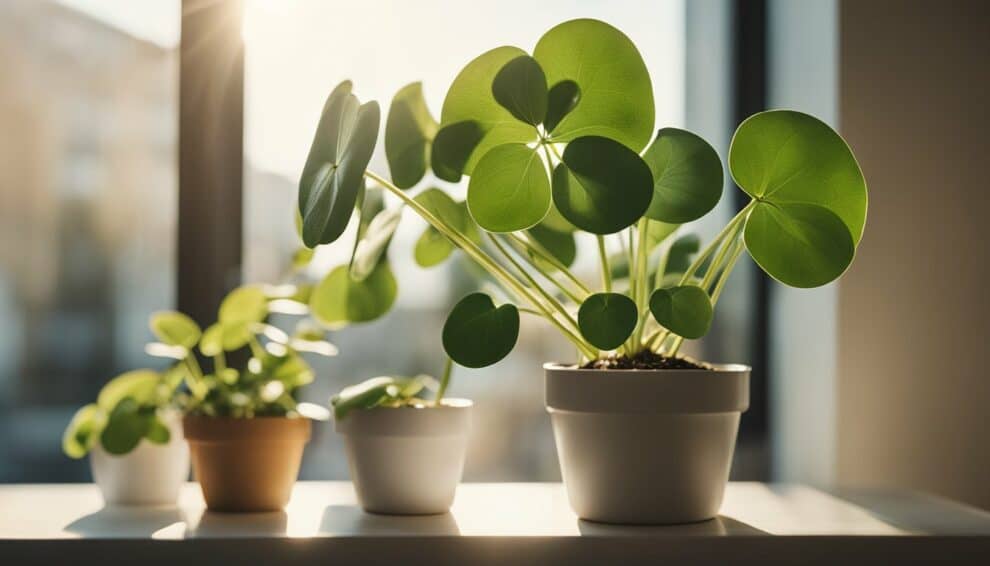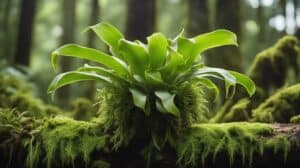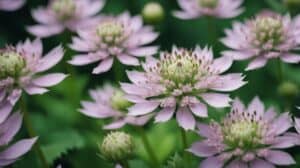Pilea Peperomioides, also known as the Chinese Money Plant, has become a phenomenon in the world of houseplants.
Its unique appearance and easy-to-care-for nature have made it a popular choice among plant enthusiasts.
The plant’s round, coin-shaped leaves and delicate stems make it a charming addition to any home.

The Chinese Money Plant is native to southern China and was first introduced to the Western world in the 1940s.
It was not until recently, however, that the plant gained widespread popularity.
Its rise to fame can be attributed to its Instagram-worthy appearance and the ease with which it can be propagated.
The plant’s ability to produce “pups” or small offshoots from its main stem means that it can be easily shared among friends and family, contributing to its viral success.
In this article, we will explore some interesting facts about the Chinese Money Plant and its growing popularity.
Origins and History

Pilea Peperomioides, commonly known as the Chinese Money Plant, is a popular houseplant that has gained immense popularity in recent years.
It is an easy-to-care plant that is characterized by its round, coin-shaped leaves and slender stems.
In this section, we’ll explore the origins and history of this fascinating plant.
Native Habitat
The Chinese Money Plant is native to the Yunnan Province in China, where it grows in the wild in shady and moist areas.
It was first discovered by a Norwegian missionary in the 1940s, who brought it back to Norway and shared it with his friends and family.
From there, it spread to other parts of Europe and eventually made its way to North America.
Cultural Significance
In China, the Pilea Peperomioides is considered to be a symbol of good luck and prosperity.
It is often given as a gift during the Chinese New Year and is also used in Feng Shui to attract positive energy and financial abundance.
In Norway, where the plant was first introduced to the western world, it is known as “the missionary plant” and is considered a symbol of friendship and gratitude.
The Chinese Money Plant has become a cultural phenomenon in recent years, with its popularity spreading across social media platforms like Instagram and Pinterest.
Its unique appearance and ease of care have made it a favorite among plant enthusiasts and beginners alike.
Whether you’re looking to add a touch of green to your home or want to bring some good luck into your life, the Chinese Money Plant is a great choice.
Botanical Characteristics

Growth Habits
Pilea Peperomioides, also known as the Chinese Money Plant, is a perennial plant that belongs to the nettle family.
It is native to the Yunnan Province in China and is known for its unique appearance and easy-to-grow nature.
The plant typically grows up to 30 cm in height and has a spread of up to 60 cm.
Leaf Structure
The leaves of the Pilea Peperomioides are round and slightly cupped, with a diameter of approximately 4-8 cm.
They are attached to the stem by long, thin petioles and have a glossy, green texture.
The veins on the leaves are quite prominent, and the leaf margins are slightly serrated.
Reproductive Features
The Pilea Peperomioides is a flowering plant that produces tiny, white, and inconspicuous flowers.
The flowers are borne on long, thin stems that emerge from the center of the plant. The flowers are followed by small, round, green fruits that contain seeds.
The plant is self-fertile and can produce seeds without the need for cross-pollination.
Overall, the Pilea Peperomioides is a fascinating plant with unique botanical characteristics that make it a popular houseplant.
Its easy-to-grow nature and attractive appearance make it an ideal choice for beginners and experienced gardeners alike.
Care and Cultivation
Lighting Requirements
Pilea Peperomioides, also known as the Chinese Money Plant, prefers bright, indirect light.
Direct sunlight can burn the leaves, so it is best to place the plant near a window that receives filtered light.
If the plant is not getting enough light, it may become leggy and the leaves may start to yellow.
Watering Practices
It is important to keep the soil of the Pilea Peperomioides evenly moist, but not waterlogged.
Overwatering can lead to root rot, so it is important to let the soil dry out slightly between waterings.
It is recommended to water the plant once a week, but this may vary depending on the humidity and temperature of the room.
Soil and Fertilization
The Pilea Peperomioides prefers well-draining soil that is rich in organic matter. A mixture of potting soil and perlite or sand can be used to achieve this.
Fertilizer can be applied once a month during the growing season, but it is important not to over-fertilize as this can lead to salt buildup in the soil.
Temperature and Humidity
The Pilea Peperomioides prefers temperatures between 60-75°F (16-24°C) and humidity levels between 40-60%.
It is important to keep the plant away from drafts and extreme temperatures.
If the air in the room is dry, misting the plant with water can help increase humidity levels.
Overall, the Pilea Peperomioides is a relatively easy plant to care for and can thrive in a variety of environments.
By following these basic care and cultivation guidelines, you can enjoy the beauty of this unique and fascinating plant in your home or office.
Propagation and Repotting

Propagation Techniques
Pilea Peperomioides, commonly known as the Chinese Money Plant, is a popular houseplant due to its unique appearance and easy propagation.
The plant can be propagated by using stem cuttings or by dividing the root ball.
To propagate using stem cuttings, cut a stem with at least two leaves and place it in a glass of water.
Change the water every few days and wait for roots to grow. Once the roots are at least an inch long, the cutting can be planted in soil.
To propagate by dividing the root ball, gently remove the plant from its pot and separate the roots into smaller sections.
Each section should have at least one stem and a few leaves. Plant each section in its own pot with fresh soil.
Repotting Tips
Pilea Peperomioides prefers well-draining soil and a pot with drainage holes.
It’s important to repot the plant every one to two years to ensure it has enough room to grow.
When repotting, gently remove the plant from its current pot and shake off any excess soil.
Place the plant in a slightly larger pot with fresh soil, making sure the top of the root ball is level with the soil surface.
Water the plant thoroughly and place it in a bright, indirect light.
Avoid overwatering the plant after repotting, as this can lead to root rot.
Wait a few days before watering and then water sparingly until the plant has adjusted to its new pot.
By following these propagation and repotting tips, you can help your Pilea Peperomioides thrive and continue to be a stunning addition to your home.
Frequently Asked Questions

What care tips ensure the health of an indoor Chinese Money Plant?
The Chinese Money Plant is a low-maintenance plant that can thrive in a variety of conditions.
However, to ensure its health, it is important to place it in a well-lit area away from direct sunlight.
The plant prefers well-draining soil and requires moderate watering. Overwatering or underwatering can lead to root rot or wilting, respectively.
It is also important to avoid exposing the plant to extreme temperatures and drafts.
What is the spiritual significance associated with the Chinese Money Plant?
The Chinese Money Plant is believed to bring good luck, prosperity, and abundance to its owner.
It is also thought to promote positive energy and purify the air.
In Feng Shui, the plant is often placed in the wealth corner of a room to attract financial success.
How does one propagate a Chinese Money Plant using water?
Propagating a Chinese Money Plant using water is a simple and effective method.
Begin by taking a stem cutting from the parent plant, making sure it has at least one leaf node.
Place the cutting in a jar or vase filled with water, making sure the node is submerged. Change the water every few days to prevent the growth of bacteria.
After a few weeks, the cutting will develop roots and can be transplanted into soil.
What conditions lead to the flowering of a Chinese Money Plant, and what does it symbolize?
Chinese Money Plants can produce small, white flowers in the right conditions.
To encourage flowering, the plant should be placed in a well-lit area with indirect sunlight.
The plant’s flowering is thought to symbolize good luck, prosperity, and abundance.
What amount of sunlight is optimal for the growth of a Chinese Money Plant?
Chinese Money Plants prefer bright, indirect sunlight. They can tolerate some direct sunlight, but too much can scorch the leaves.
In low-light conditions, the plant may grow slowly and develop smaller leaves.
What’s the scientific name for the Chinese Money Plant?
The scientific name for the Chinese Money Plant is Pilea peperomioides.














